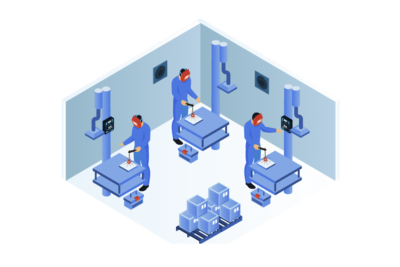Welding
Continuous monitoring of carbon monoxide and nitrogen dioxide in a welding shop.
There are over 70 different types of welding processes, all which produce a variety of hazardous gases. The gas or gases generated and their concentrations depend on the process used and the gas formation mechanisms. Common gases produced are carbon monoxide, nitrogen dioxide, ozone, hydrogen chloride, carbon dioxide, nitric oxide and other gaseous fluorides. The health hazards from welding gases are asphyxiation (lack of oxygen), fire, explosion and toxicity.
A well designed and maintained ventilation system is required to remove the air contaminants from the welder’s breathing zone. The installation of a fixed gas detection system to continuously monitor the levels hazardous gases help to protect welders and workers from exposure and risks to their health, providing a safer working environment.

KEY CONSIDERATIONS
- The gas detection system operates ventilation systems, on demand controlled
- Depending on the type of welding, different hazardous gases may need monitoring
- Consideration for the air flow patterns in the room; entrances to the room, type of ventilation system, number of welding stations and any other sources of active air currents will affect the ability of the sensors to accurately read the gas levels.
TARGET GASES
- Carbon Monoxide (CO)
- Nitrogen Dioxide (NO2)
- Oxygen (O2)
- Combustible gases
- Other hazardous gases as required

